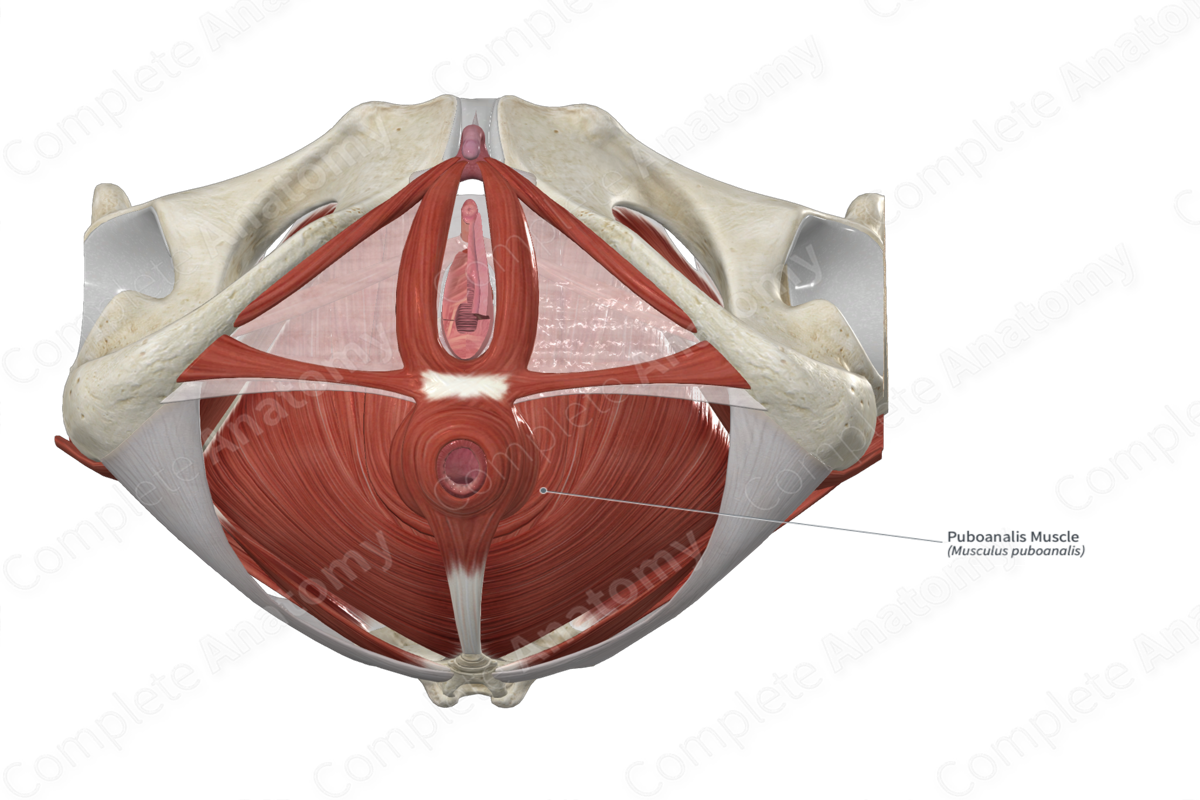
Quick Facts
Origin: Posterior aspect of body of pubis.
Insertion: Fibers surround posterior aspect of anorectal junction.
Action: Provides structural support to adjacent pelvic structures; fecal continence.
Innervation: Nerve to levator ani muscle (S3-S4); inferior anal and perineal nerves.
Arterial Supply: Inferior gluteal, inferior vesical, and internal pudendal arteries.
Related parts of the anatomy
Origin
The puboanalis muscle originates from the posterior aspect of the body of pubis.
Insertion
The fibers of the puboanalis muscle travel posteriorly, where the left and right puboanalis muscles become continuous with each other as they arch over the posterior aspect of the anorectal junction.
Key Features & Anatomical Relations
The puboanalis (puborectalis) muscle is one of the three muscles that form the levator ani muscle, which itself forms a large part of the pelvic diaphragm. The puboanalis is a thick, narrow skeletal muscle. It is located:
- inferior to the pubococcygeus muscle;
- medial to the pubis and the iliococcygeus muscle;
- lateral to the urethra, the rectum, the vagina in females, and the prostate in males.
Actions
As part of the pelvic diaphragm, the puboanalis muscle provides structural support to adjacent pelvic structures and elevates the pelvic floor. Its fibers are capable of maintaining a tonic contraction at rest, which relaxes during defecation (Standring, 2016).
List of Clinical Correlates
- Prolapse of pelvic viscera
- Fecal incontinence
References
Standring, S. (2016) Gray's Anatomy: The Anatomical Basis of Clinical Practice. Gray's Anatomy Series 41st edn.: Elsevier Limited.
Actions
As part of the pelvic diaphragm, the puboanalis muscle provides structural support to adjacent pelvic structures and elevates the pelvic floor. Its fibers are capable of maintaining a tonic contraction at rest, which relaxes during defecation (Standring, 2016).
Learn more about this topic from other Elsevier products
Puborectalis Muscle

The puborectalis muscle sling is the larger muscle, arising from the posterior surface of the pubis on each side and passing posteriorly beside the urethra and vagina to fuse with the opposite homologous muscle behind the anorectum at the anorectal junction.




